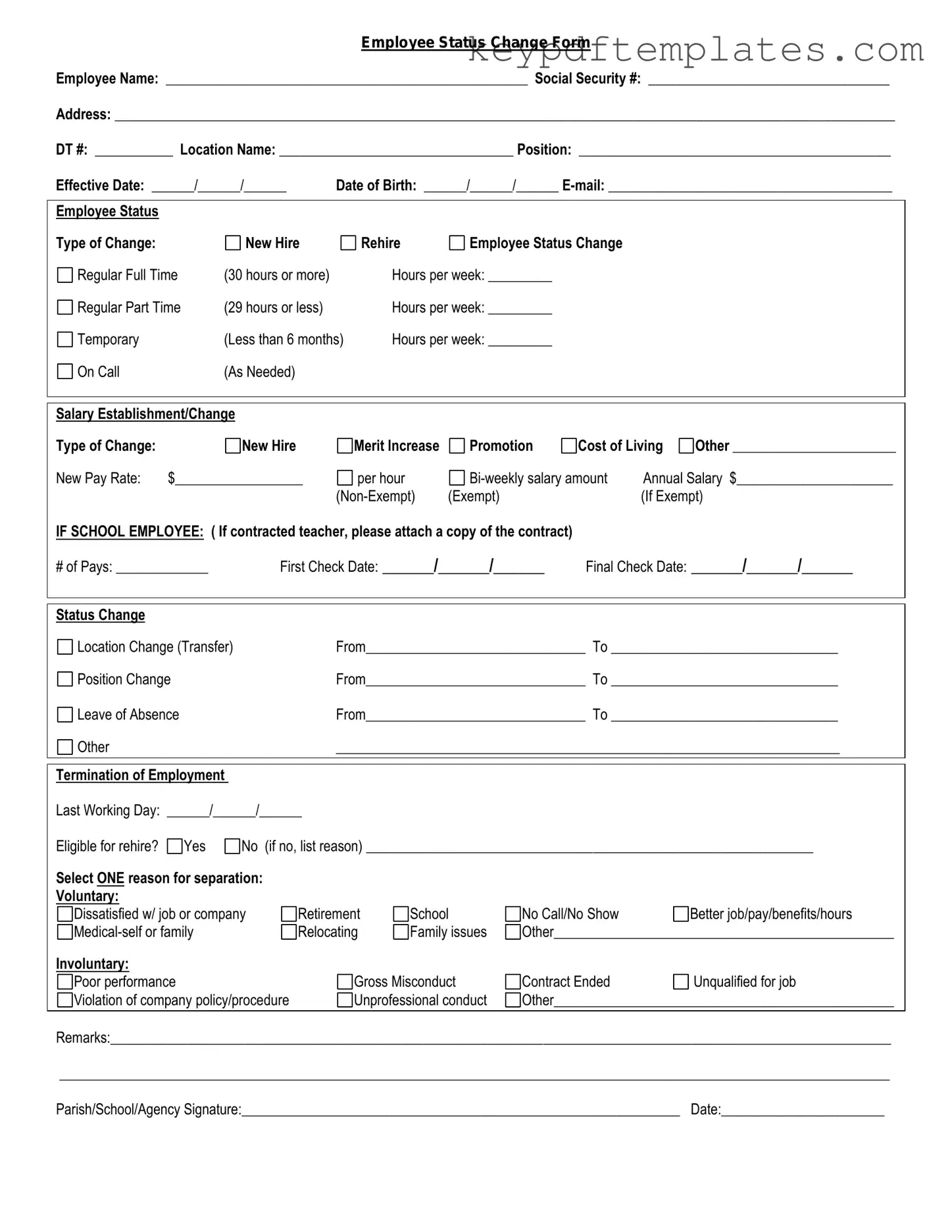Get Employee Status Change Form
The Employee Status Change form is a document used by organizations to formally record changes in an employee's status, such as promotions, demotions, or transfers. This form ensures that all relevant information is updated in the company’s records, facilitating accurate payroll and benefits management. Understanding its purpose and proper completion is essential for both employees and human resources personnel.
Modify Document Online
